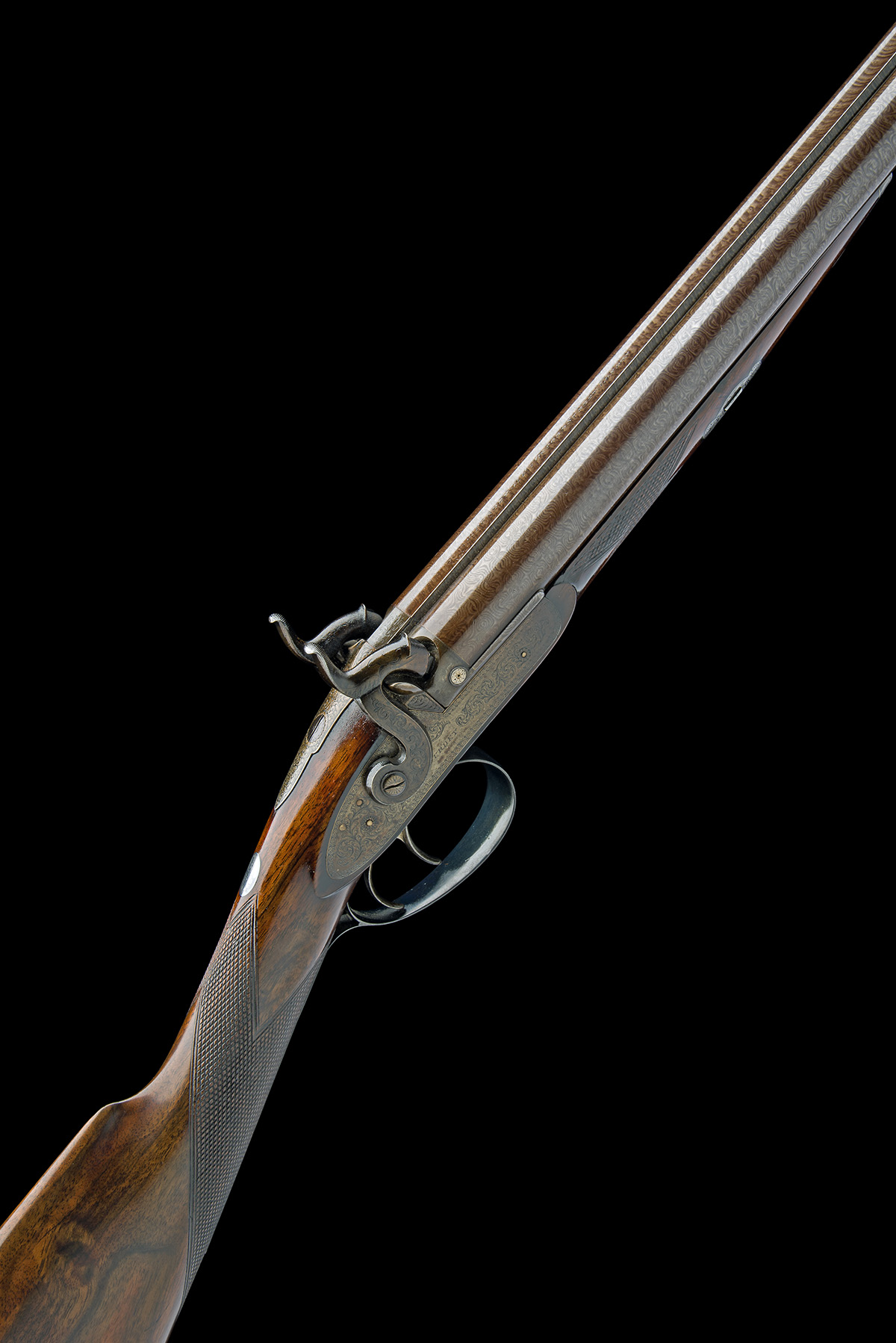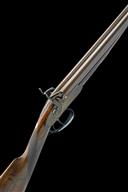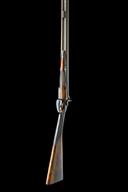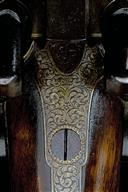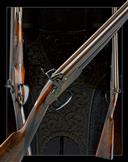Product Details
* JAMES PURDEY, LONDON
A 14-BORE PERCUSSION DOUBLE-BARRELLED SPORTING GUN, serial no. 4127,
for 1846, with expertly rebrowned 31in. damascus barrels, the top-rib signed 'J. PURDEY, 314 1/2 OXFORD STREET, LONDON', bead fore-sight, engraved band and platinum line at breech, engraved rib-end, engraved and vented platinum plugs, borderline and scroll engraved top-tang, border and scroll engraved lacquered bar-action locks signed 'PURDEY', dolphin-headed hammers, chequered walnut half-stock with reblued iron furniture including engraved heel-plate (detail rubbed), oval escutcheon to the back of wrist, ramrod absent but together with a later leather slip
Provenance: In Patrick Unsworth's book 'The Early Purdeys', this shotgun is listed as being a 31in. 14-bore sold as one of a pair on 5th September 1846 for a cost (for the pair) of £105. 0. No other details are given
The makers have kindly provided us with the following information:
Completed: 1847
For: Sir St. George Gore, Baronet of Gore Manor in County Donegal
Description: No. 1 of a pair of double-barrelled percussion sporting guns
Calibre: 14-bore
Barrels: 31in.
Choke: Both Cyl.
Notes:
Sold by Messer's Foster
Sir St. George Gore was a wealthy Irish nobleman, baronet of Gore Manor in County Donegal. He loved hunting and fishing, and in the 1850s he decided to visit the American West. His expedition lasted nearly three years, from 1854 to 1857, taking him to Colorado, Wyoming, Montana, and the Dakotas, and cost some $500,000 (equivalent to around £18,000,000 today). The exact number of animals killed by Gore for sport is unknown. He himself claimed to have killed 2,000 buffalo, 1,600 deer and elk, and 105 bears.
As a member of the aristocracy, Gore saw no need to rough it in the wilderness. His chief guide was the famous mountain man Jim Bridger, and his company included twenty-seven vehicles, more than one hundred horses, eighteen oxen, and three cows. Gore also had a wagon loaded with weapons, including pistols, shotguns, and about seventy-five rifles. He had a 'large striped green and white linen tent,' a brass bedstead, a rug, and a portable table. Gore hired at least forty men for a variety of jobs, including cooking, hunting, and tending greyhounds and staghounds.
Gore and his expedition travelled through lands held by various Indian tribes, some of whom resented the slaughter of animals in their lands. At one point a band of Piegans stole twenty-one horses, and in another incident Blood Indians tried to capture more horses. On the other hand, the company traded peacefully with a band of Crows, acquiring fresh horses from them. Officials of the United States also found Gore's hunting excessive. Superintendent of Indian Affairs Alfred Cumming protested that Gore was killing game that the Indians needed to survive. Another observer, M. C. Meiggs, wrote to the secretary of the interior to complain. Observing that Gore had killed thousands of buffalo, he commented, 'We punish an Indian for killing a settler's cow for food…. How can such destruction of their game be permitted by their friends in the Government of the United States?' The government, however, took no action against Gore, who returned to Ireland in 1857.
* Please note this item is subject to 5% VAT on the hammer price (UK Buyers only).
Please click HERE to view Terms & Conditions. Please note all Lots are listed in accordance with UK Law, for overseas buyers, please ensure you are familiar with your relevant local firearms and customs regulations before bidding.
Estimate £2,000-3,000

